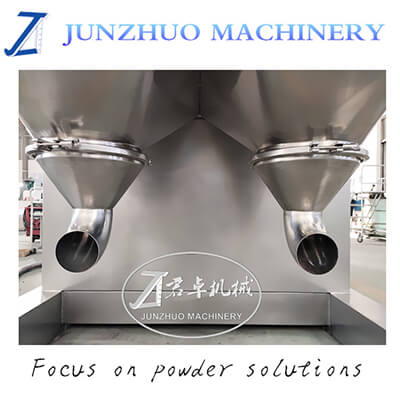Copyright © 2019 JIANGYIN JUNZHUO MACHINERY MANUFACTURING CO., LTD All Rights Reserved. Site MapDesigned by iwonder.cn
 jz@junzhuojx.com
jz@junzhuojx.com
 +86-0510-86382380
+86-0510-86382380
A grinding granulator is a rotary grinder that is used to grind remnant or scrap parts and sprues and runners into feedstock sized granules for another round of processing.
Choosing a granulator highly depends upon the material to be cut, its shape and thickness, the quantity of material that needs to be granulated, and how to regrinding process will be.
The feed hopper must be examined for the safety of the operator, it should be sized in such a way that it can take in the biggest part being granulated without being labor-intensive and dangerous in precutting.
The safety devices in most recently produced granulators have electric interlocks that disallow contact with the cutting chamber until the rotor stops turning.
It is very crucial that you purchase your grinding granulator from a capable and reputable manufacturer. With this, you can be sure of the quality and durability of your granulator.
So, let's take a quick look at the components that determine the choice of a grinding granulator.
1. Cutting Chamber Design
The major cutting-chamber designs are: tangential, conventional and straight-drop, there is also a hybrid model.
The tangential design sets the rotor at an offset from the feed opening so that the feedstock is channeled to the downward cut of the rotating knives at a tangent to the cutting circle.
This cutting chamber offers a large "bite" radius, which is the best way to achieve high output and clean regrind with bulky, thin-walled parts.
A straight-drop design loads material vertical to the cutting circle and is most suitable for thick-walled parts. Its "smaller" bites take less material and perhaps halt the rotor.
The hybrid model feeds material to the knives at a point in between the first two and permits regular molders with a wide variety of part sizes and shapes to process both thick- and thin-walled materials in the same machine.
2. Rotors
Rotors are made in four main categories which are open, closed (solid), staggered, and staggered/ segmented.
Open rotors allow for free air-flow through the cutting chamber, this is why they are mostly used to granulate heat-sensitive resins or feedstocks that are still warm due to processing.
Closed rotors have no spaces in between the rotating knives and the shaft’s center, providing a stronger knife mounting arrangement and adding inactivity to cut through the bulkiest feedstocks, like large cold purgings.
Staggered rotors come in a closed or semi-closed setting and are perfect for cutting the most heavy, thick-walled parts. When in heavy-duty applications, flywheel-type pulleys increase rotor inactivity and are often more useful.
Staggered/segmented rotors are typically in a helical style, which offers more cuts for each revolution than the traditional rotor designs. The cutting circle remains regular after sharpening, minimizing screen plugging, heat build-up, and fines. Its design is excellent for cutting the most heavy, thick-walled parts.
3. Screen
The size of the screen hole is majorly determined by the material composition and machine size. When the rotor is running slower, smaller screen holes and a thinner screen will produce more identical particle sizes and the highest output.
Meanwhile, when running at higher speeds, larger screen holes are needed to achieve output and reduce fines, even though they may increase the range of particle sizes, particularly with brittle materials. Reversible screens also have a longer lifespan.

4. Knives
The arrangement of knife blades, their tip angle, speed, number, and sharpness, have a huge influence on the granulator efficiency and granulate quality. Knives may be mounted on an immovable bed or on the rotor.
The clearance between rotating and bed knives is crucial to size reduction performance. Smaller clearances produce cleaner, more efficient cuts and are important when grinding softer, more ductile polymers.
Many granulator designs offer only two stationary or bed knives. Make sure to check for proper knife clearance recommendations based on materials being granulated, with the manufacturer.
Also, when you increase the number of knife blades placed on the bed or the rotor, it can significantly increase output, because the number of cuts per revolution will increase.
With a "slant-knife" arrangement, scissors cutting action is produced and provides higher outputs with reduced horsepower, less noise, and reduced dust than the regular straight-cut knife.
Summary
These are all important components to take close looks at when purchasing a grinding granulator.
However, all these components and their functions can only work perfectly if the grinding granulator is purchased from a professional and reliable manufacturer.
By continuing to use the site you agree to our privacy policy Terms and Conditions.